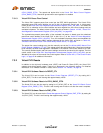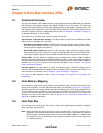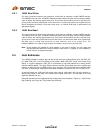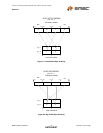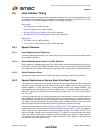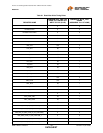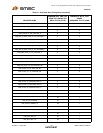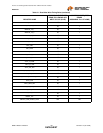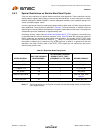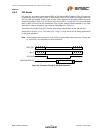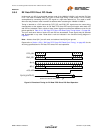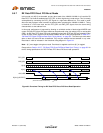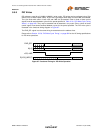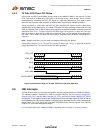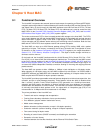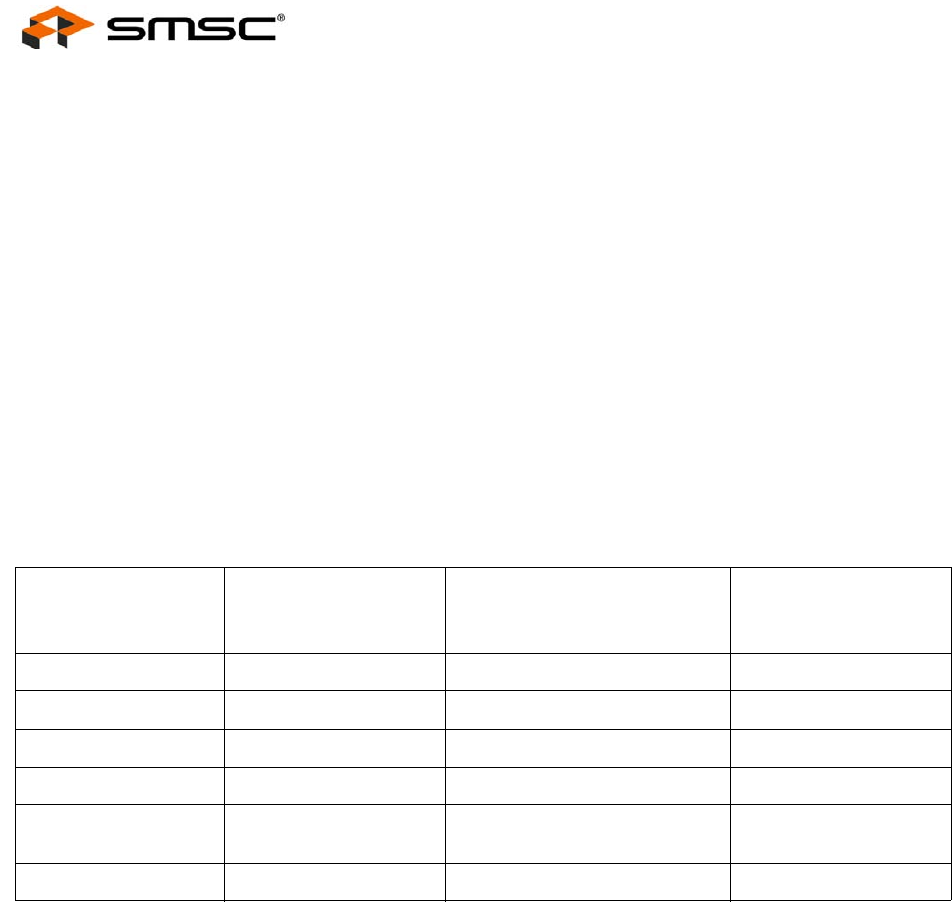
Two Port 10/100 Managed Ethernet Switch with 16-Bit Non-PCI CPU Interface
Datasheet
Revision 1.4 (08-19-08) 106 SMSC LAN9311/LAN9311i
DATASHEET
8.5.3 Special Restrictions on Back-to-Back Read Cycles
There are also restrictions on specific back-to-back host read operations. These restrictions concern
reading specific registers after reading a resource that has side effects. In many cases there is a delay
between reading the LAN9311/LAN9311i, and the subsequent indication of the expected change in the
control and status register values.
In order to prevent the host from reading stale data on back-to-back reads, minimum wait periods have
been established. These periods are specified in Table 8.2. The host processor is required to wait the
specified period of time between read operations of specific combinations of resources. The wait period
is dependant upon the combination of registers being read.
Performing “dummy” reads of the Byte Order Test Register (BYTE_TEST) register is a convenient way
to guarantee that the minimum wait time restriction is met. Ta ble 8. 2 below also shows the number of
dummy reads that are required for back-to-back read operations. The number of BYTE_TEST reads
in this table is based on the minimum timing for T
cyc
(45ns). For microprocessors with slower busses
the number of reads may be reduced as long as the total time is equal to, or greater than the time
specified in the table. Dummy reads of the BYTE_TEST register are not required as long as the
minimum time period is met.
Note 8.1 This timing applies only to the auto-increment and auto-decrement modes of Switch Fabric
CSR register access.
Table 8.2 Read After Read Timing Rules
AFTER READING...
WAIT FOR THIS MANY
NANOSECONDS...
OR PERFORM THIS MANY
READS OF BYTE_TEST…
(ASSUMING T
CYC
OF 45NS) BEFORE READING...
RX Data FIFO 135 3 RX_FIFO_INF
RX Status FIFO 135 3 RX_FIFO_INF
TX Status FIFO 135 3 TX_FIFO_INF
RX_DROP 180 4 RX_DROP
SWITCH_CSR_DATA 45 1 SWITCH_CSR_CMD
Note 8.1
VPHY_AN_EXP 45 1 VPHY_AN_EXP



